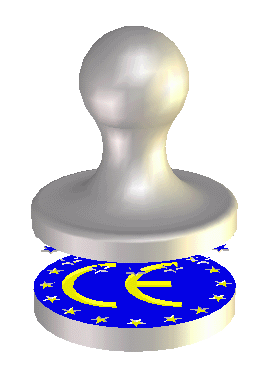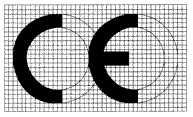Engineering is a very important branch of economy. Unfortunately incorrect usage of machines and wrong construction solutions often cause accidents which may lead to great financial losses.
The European Union harmonized the regulations regarding the construction and usage of machines in order to prevent workplace accidents.
Standardized regulations enable free trade in goods within the European Economic Area as long as production and sale of the goods do not pose a threat for users, third parties, property or the environment.

A complete documentation of the analysis of the conformity assessment should be available upon request.
If the machine does not correspond to the defined requirements and still has the CE marking, legal action will be undertaken against the persons who applied the CE marking.
Machines that do not match the EC conformity declaration concerning the CE marking must not be bought or sold!
The manufacturer ought to pursue the aim of developing a safe machine. To achieve this aim he should take account of all hazards that apply to this machine (standard EN ISO 12100) and should consider the analyses and conformity assessment he created by himself.
The task of assessing the machines with respect to national laws and directives can be accomplished by an in-company team.
With regard to particularly dangerous machines (Annex IV of the Machine Directive 2006/42/EC) stricter conformity assessment procedures are required, which have to be conducted by Notified Body.
The CE marking enables the import of goods to the EU market and prevents unfair competition.
The CE marking is mandatory for all machines and constructions which are sold in the European Economic Area even for machines manufactured in countries outside of the European Union. In such a case the manufacturer may authorize a natural or legal person to act on his behalf in relation to the part of his obligations imposed on him by Machinery Directive.

CE marking for machines:
The CE marking can only be used as soon as all requirements as defined by the EU directives are fulfilled.
If the machine which is to be placed on the market is complete, then the CE marking must be placed on the machine and the EC declaration of conformity must be signed before placing the machine on the market.
If the machine which is to be placed on the market is an incomplete machine, the CE marking must be placed on the machine and the EC declaration of incorporation of partly completed machinery must be signed before placing an incomplete machine on the market. Based on this, an EC declaration of conformity for the complete machine should be made and it should be marked by CE sign.
The CE marking of a machine ought to be noticeable and permanently legible.
The CE marking should contain:
|
 |

CE marking – example:
 |
The CE marking has to be sized at least 5 mm |
If the CE marking is to be resized, the proportions shown in the illustration above have to be maintained.
In case of a small machine it is allowed to deviate from this state.
It is not necessary to attach the CE marking to an electrical device. It is sufficient to attach it to the wrapping or the included documents (user manual or certificate of warranty).
For an effective and correct execution of the EC conformity declaration of machines knowledge is required as well as the ability to perform this analysis.